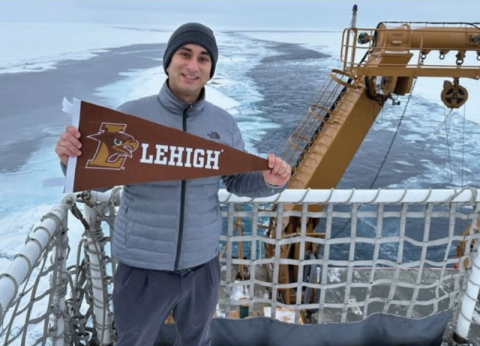
A funny thing happened to Eugene Vivino ’16 on the day his landlord’s birds flew away. A woman who was helping to locate them was wearing a jacket with a logo that caught Vivino’s attention: Scripps Institution of Oceanography. And, she told him, Scripps, a center for ocean and Earth science research in La Jolla, California, was hiring. Then a systems analyst at Northrop Grumman working to support Department of Defense research labs, and with a degree in Earth and environmental sciences from Lehigh, Vivino decided to send in a resume....
Read the rest of the story in the Spring 2024 Alumni Bulletin: https://flippingbook.lehigh.edu/Alumni-Bulletin-Spring-24/24/
